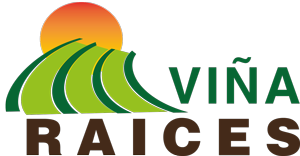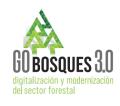
VIÑA RAICES Operational Group: Improving sustainability in viticulture in semi-arid areas of Spain through agronomic innovations and the acquisition of ecosystem services.
- Type Operational group
- Status In progress
- Execution 2024 -2027
- Assigned Budget 600.000,00 €
- Scope Supraautonómico
- Autonomous community Castilla - La Mancha; Extremadura; Madrid, Comunidad de
- Main source of financing CAP 2023-2027
- Project website GO VIÑA-RAICES
The aim of the VIÑA-RAICES project is to ensure the viability and efficiency of vegetation cover management in semi-arid areas to promote sustainable management of wine-growing soils and low-carbon agriculture. Over the course of the project, 8 results will be obtained, the aim of which is to promote innovative agronomic practices related to sustainable agriculture, climate change mitigation and biodiversity preservation.
The main innovation is the adoption of plant covers in vineyards and the quantification of their impact, through pilot projects, which is presented as a management strategy to promote sustainability in viticulture, contributing to the improvement of biodiversity and ecosystem services.
In addition, it contributes to the modernization of agriculture and rural areas by improving access to research, innovation and training.
Over the course of the project, eight concrete outcomes will be achieved, aiming to promote innovative agronomic practices related to sustainable agriculture, climate change mitigation, and biodiversity preservation. The introduction of plant cover in vineyards is presented as a management strategy to promote sustainability in viticulture and contribute to the improvement of biodiversity and ecosystem services.
The adoption of this practice is limited due to a lack of information and a scarcity of studies evaluating its technical and economic viability in the specific context of viticulture in semi-arid regions. The project addresses this knowledge gap and quantifies the impact of this practice on other ecosystems provided by vineyards. The project also contributes to the modernization of agriculture and rural areas by improving access to research, innovation, and training.
First, a bibliographic analysis and compilation of sources will be conducted to understand the state of the art regarding the implications of different agronomic soil management techniques in semi-arid vineyards.
Viticultural parameters will then be assessed before and after the pilot projects are implemented, and pilot projects for the implementation of living and inert plant covers will be implemented on the designated plots. A technical and socioeconomic analysis will then be conducted to determine the feasibility of using plant covers in semi-arid viticulture, resulting in a Feasibility Plan and a Contingency Plan.
This will be followed by an analysis of the impact of innovative agronomic practices on soil diversity. The final activities will focus on the development of best practice guides, soil management recommendations, and a roadmap for replicability, contributing to the modernization and sustainability of the sector.
Spain leads the world in the expansion of vineyard cultivation, which is essential to its economy, society, and environment. The wine sector, which includes the production, marketing, and distribution of wine, faces challenges related to soil sustainability and agricultural practices. The lack of studies on plant cover in semi-arid vineyards motivates this project to assess its technical and socioeconomic feasibility. The European Parliament's proposal for a Framework Directive/Law on soil conservation highlights the importance of maintaining soil health, which is crucial for food production and climate resilience. A high percentage of soils in the EU are in poor condition.
Healthy soil stores carbon, filters water, and sustains biodiversity. The wine sector, with a significant global market, faces concerns about the use of pesticides and intensive tillage, which affect biodiversity and soil quality. Erosion is a problem in vineyards due to their characteristics and location on sloping terrain. This project aligns with EU strategies to make the agri-food sector more sustainable and environmentally friendly.
In particular, it follows the European Green Deal, which seeks climate neutrality by 2050, and the Farm to Fork and Biodiversity by 2030 strategies, which promote sustainable food production and ecosystem restoration. CAP National Strategic Plans should reflect these ambitions, such as Spain's PEPAC for 2023-2027, which introduces eco-regimes. These remunerate sustainable agricultural practices, such as extensive grazing, conservation agriculture, and the use of cover crops in woody crops.
The project will explore low-carbon practices, such as spontaneous or sown ground covers, which protect the soil, and inert ground covers, which use pruning waste. These practices are consistent with the recent European directive on soil monitoring and resilience. Finally, the project aligns with the objectives of the Spanish National Research Agency in the area of Agricultural and Agrifood Sciences.
Ensure the viability and efficiency of land cover management in semi-arid areas to promote sustainable management of vineyard soils and low-carbon agriculture.
The VIÑA-RAÍCES project employs a detailed plan to monitor and evaluate innovative agronomic practices in semi-arid vineyards.
This includes specific resources, key milestones, and deliverables to ensure a thorough evaluation throughout the project.
- Resources and Activities.
- Human Resources: Participation of coordinators and technicians from ITAP, CACLM, CAEx, UCAM and CICYTEX, with additional external support.
- Technical Resources: Use of UAVs with RGB, multispectral, and thermal cameras, soil moisture and temperature sensors, and soil respiration measurement systems.
- Methodologies: Bibliographic analysis: Establishment of a knowledge base of soil management practices.
- Pilot Project Design: Setting up experimental plots with different soil management treatments.
- Data Collection and Monitoring: Continuous measurement of soil and plant parameters.
Key milestones and deliverables:
- R1: State-of-the-art Report (July 2024 - September 2024): Comprehensive report summarizing current knowledge and practices.
- R2 and R3: Pre- and post-implementation assessments (July 2024 - December 2026): Reports on ex-ante and ex-post assessments of soil and plant parameters.
- R4: Feasibility Study (May 2025 – March 2026): Feasibility and contingency plans.
- R5: Impact analysis (January 2025 - December 2026): Impact analysis report on biodiversity and ecosystem services.
- R6 and R7: Best Practices Guide and Recommendations (August 2026 - April 2027): Best practices guide and recommendations document.
- R8: Transfer and Replication (July 2024 - April 2027): Communication plan, transfer plan, and replication roadmap. -Monitoring and Evaluation: Indicators and Metrics: Key performance indicators (KPIs) include soil health, plant growth, water retention, and carbon sequestration. Data Verification and Reporting: Regular data collection and analysis with periodic comprehensive reporting. Stakeholder Engagement: Involving winegrowers, researchers, and local communities for feedback and practical implementation. This detailed plan ensures that the project advances sustainable viticulture practices, improving the economic, environmental, and social sustainability of semi-arid regions in Spain.
- Coordinator/entity name: AGRO-FOOD COOPERATIVES OF CASTILLA LA MANCHA UNION OF COOP (CALCM)
- Postal address: AVENIDA DE CRIPTANA 43, CP 13600, ALCAZAR DE SAN JUAN, SPAIN
- Coordinator/entity email: COOPERATIVAS@AGROALIMENTARIASCLM.COOP
- Telephone: 926545200
The VIÑA-RAÍCES project employs a detailed plan for monitoring and evaluating innovative agronomic practices in semi-arid vineyards.
This includes specific resources, key milestones, and deliverables to ensure a thorough evaluation throughout the project. Resources and Activities: -Human Resources: Participation of coordinators and technicians from ITAP, CACLM, CAEx, UCAM, and CICYTEX, with additional external support. -Technical Resources: Utilization of UAVs with RGB, multispectral, and thermal cameras, soil moisture and temperature sensors, and soil respiration measurement systems. -Methodologies: Bibliographic Analysis: Establishment of a knowledge base of soil management practices. Pilot Project Design: Setup of experimental plots with different soil management treatments. Data Collection and Monitoring: Continuous measurement of soil and plant parameters.
- COOPERATIVAS AGROALIMENTARIAS CASTILLA LA MANCHA UNION DE COOP (CALCM)
- COOPERATIVAS AGROALIMENTARIAS CASTILLA LA MANCHA UNION DE COOP (CALCM)
- INSTITUTO TECNICO AGRONOMICO PROVINCIAL SAU ITAP
- COOPERATIVAS AGROALIMENTARIAS EXTREMADURA UNION DE COOP CAEX
- UNION DE COOPERATIVAS AGRARIAS MADRILENAS UCAM




